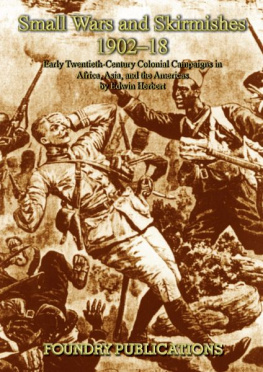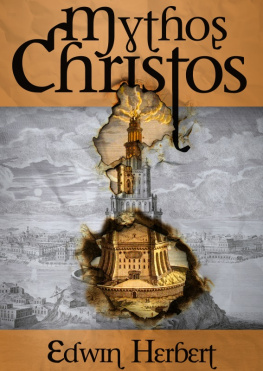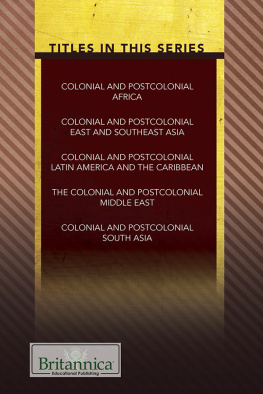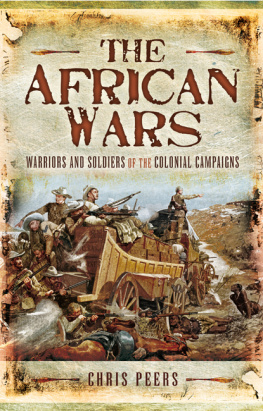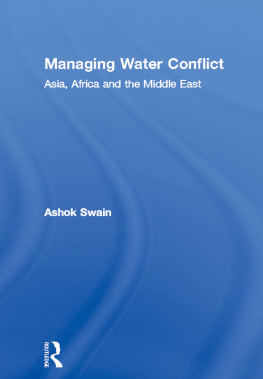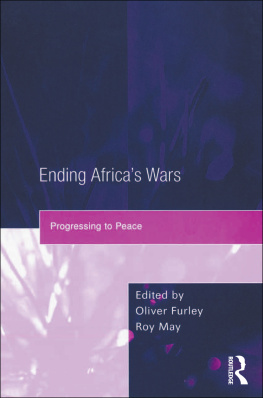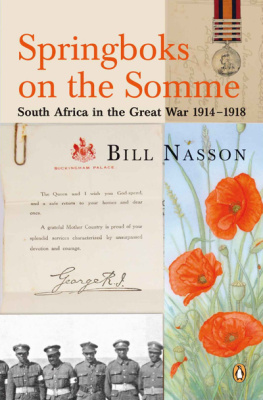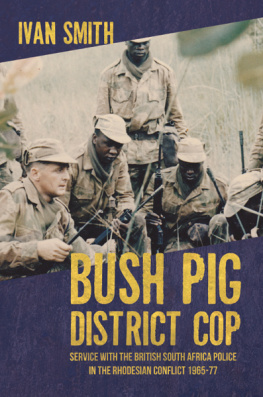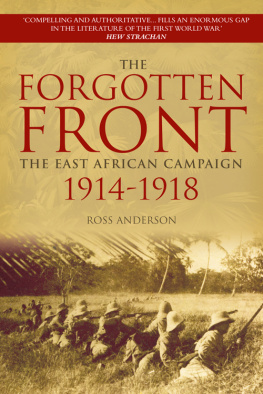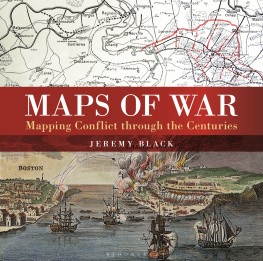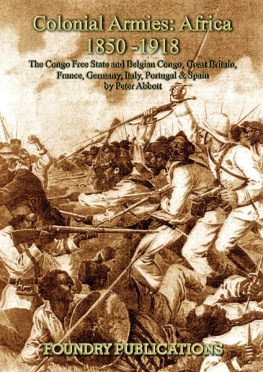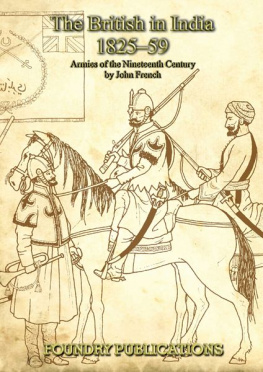

First published in Great Britain in 2002
by Foundry Books
2434 St. Marks Street
Nottingham
NG3 1DE
Tel 0115 8414141
Text copyright 2002 by Edwin Herbert
Drawings copyright 2002 by Ian Heath
The right of Edwin Herbert to be identified as the author
of this work has been asserted in accordance
with sections 77 and 78 of the
Copyright Designs and Patents Act 1988.
ISBN 1-901543-34-X
Digital ISBN 978-1-901543-34-6
Print ISBN: 9781901543056
All rights reserved. No part of this publication may
be reproduced, stored in a retrieval system, or transmitted
in any form or by any means, electronic, mechanical,
photocopying, recording or otherwise, without prior
permission in writing from the publishers.
Typeset by G&M
01933 461449
Digital scanning by Kevin Dallimore
0181 658 2488
Digital conversion by Kevin Dallimore
Also by the same author:
The Second Anglo-Boer War (Argus 1990)
PREFACE
There is a common misconception that small wars, characterised by Sir Garnet Wolseley as warfare against uncivilised nations, took place only in the Victorian period. The Second Anglo-Boer War, or South African War, of 18991902 is consequently often referred to as the last of the small wars. And yet in the period 190214 the Americans, Belgians, British, Dutch, French, Germans, Portuguese, and Spanish, for political, military, or commercial reasons, all embarked on a new phase of colonisation involving expeditions into the hinterland of their overseas territories.
After a hiatus during the First World War, when resources were diverted elsewhere, these incursions were followed in the 1920s and 1930s by a process of consolidation involving campaigns against emerging resistance movements, many of which owed their strength to religious fanaticism. Major nationalist leaders such as Abd el-Krim in Morocco and Omar al-Mukhtar in Libya emerged from 1920 onwards; and the spark provided by their resistance to foreign control lit the flame of post1945 independence movements. Over the period 190236 as a whole, which the two volumes of this series will be covering, the small wars and skirmishes in Africa, Asia, and Central America were as many and varied, and as desperately fought, as anything that had occurred during the Victorian era.
Unlike Victorian small wars, however, few of the military expeditions mounted during the decade leading up to the outbreak of the First World War are well documented. Many of these campaigns have now faded into history. For some, no detailed accounts are available in English at all. In particular, information is lacking on military formations, uniforms, and tactics of the regular forces, and on virtually every aspect of the indigenous armies. Nor has any analysis been made of the historical effects. This book attempts to open the door on some of these neglected areas. The colonial campaigns of the inter-war years are better covered in the literature but, so far as I am aware, no general comparative study of these has been attempted before.
A project such as this cannot hope to cover every small war that occurred over a period of three decades. What it can attempt to do is illustrate the main types of campaign, the organisation of the forces, the effects of new weaponry, and the tactics that the indigenous peoples used to counter the technology of the colonial invaders, particularly by applying their local knowledge of some of the most hostile terrain in the world. In most cases at least one battle or skirmish is described in some detail in order to give a flavour of the significant factors involved. Sketch maps are provided to indicate the main campaigns and line illustrations depict the uniforms or tribal dress of the combatants.
Small wars did not, of course, end when Imperialism gave way to independence movements. They continued as incursions by more powerful neighbouring states once the colonial powers had departed the scene (for example in East Timor, Tibet, and the Western Sahara) or as civil wars, the latter often arising from ethnic conflicts caused by the artificial boundaries created by the former colonial powers (as in Angola, India/Pakistan, Indo-China, Mozambique, Nigeria, Rwanda, Sudan, and Zaire). Nor is any end in sight as the 21st century dawns the lessons of history take a long time to learn.
The present volume deals with the period 190218, and the second will deal with 191936. The latter will also include appendices on weaponry and equipment, mechanised vehicles, communications, and the use of aircraft, armoured cars, and tanks in colonial warfare. Each section in either volume is intended to be self-contained but concludes with a select bibliography to help readers who wish to go back to original sources or seek further information.
I owe a debt of gratitude to the authors of the many works I have consulted and drawn upon in writing this volume. I have made every effort to acknowledge these sources in the notes and further reading lists and to trace copyright holders to obtain permission to use material still in copyright or subject to reproduction rights. The majority of printed books quoted in the text were consulted at the British Library, 96 Euston Road, London, NW1 2DB. Newspapers and periodicals are held at the Newspaper Library, Colindale Avenue, London, NW9 5H. Other relevant sources of information include Soldiers of the Queen, a quarterly publication available from the Victorian Military Society, which despite its name covers the period up to 1914, and several Internet sites, including www.magweb.com dealing with the journal Heliograph published in the USA.
As regards the vexed question of how foreign names should be rendered in English, T.E. Lawrence pointed out in Seven Pillars of Wisdom that no system of transliteration is perfect, and one spelling is as good as another even in the same text, in his view. Since vowels vary from district to district and some consonants in Arabic have no equivalent in English, many words can be represented in a variety of ways. In this study, well-known place-names have, for the sake of clarity, been left as spelt in the older literature, e.g., Medina instead of the modern al-Madinah. However, more obscure names, of people and places that may not be generally familiar to readers, have been spelt according to the usage of contemporary authors from the countries concerned who have written books or articles on the subject in English. Where there are several such modern versions of place-names, I have opted for that given in The Times Atlas of the World . However, I do not claim to have achieved consistency in this approach!
For American and British campaigns, distances and weights are quoted in Imperial measures, followed by approximate metric conversions. For other campaigns, the conversion is generally reversed.
Last but certainly not least, I should like to offer my gratitude to Bryan Ansell and Mark Copplestone for their great help and encouragement in initiating, developing, and completing this project, and to John French and Peter Abbott for searching out valuable additional material for Ian Heaths drawings.
Edwin Herbert
June 2000

CONTENTS
Expeditions carried out by the colonial powers within their sphere of influence to punish incursions by irregular forces or to consolidate the borders of their overseas possessions, during the period from the end of the South African War in May 1902 to the outbreak of the First World War in July 1914. The increasing use of mounted infantry and camel corps to increase the mobility of colonial forces. The inevitable superiority of artillery, machine-guns, and magazine rifles against muskets, bows, and spears; and the development of guerrilla warfare by irregular armies to counteract the advantages of regular troops in open battle.
Next page
